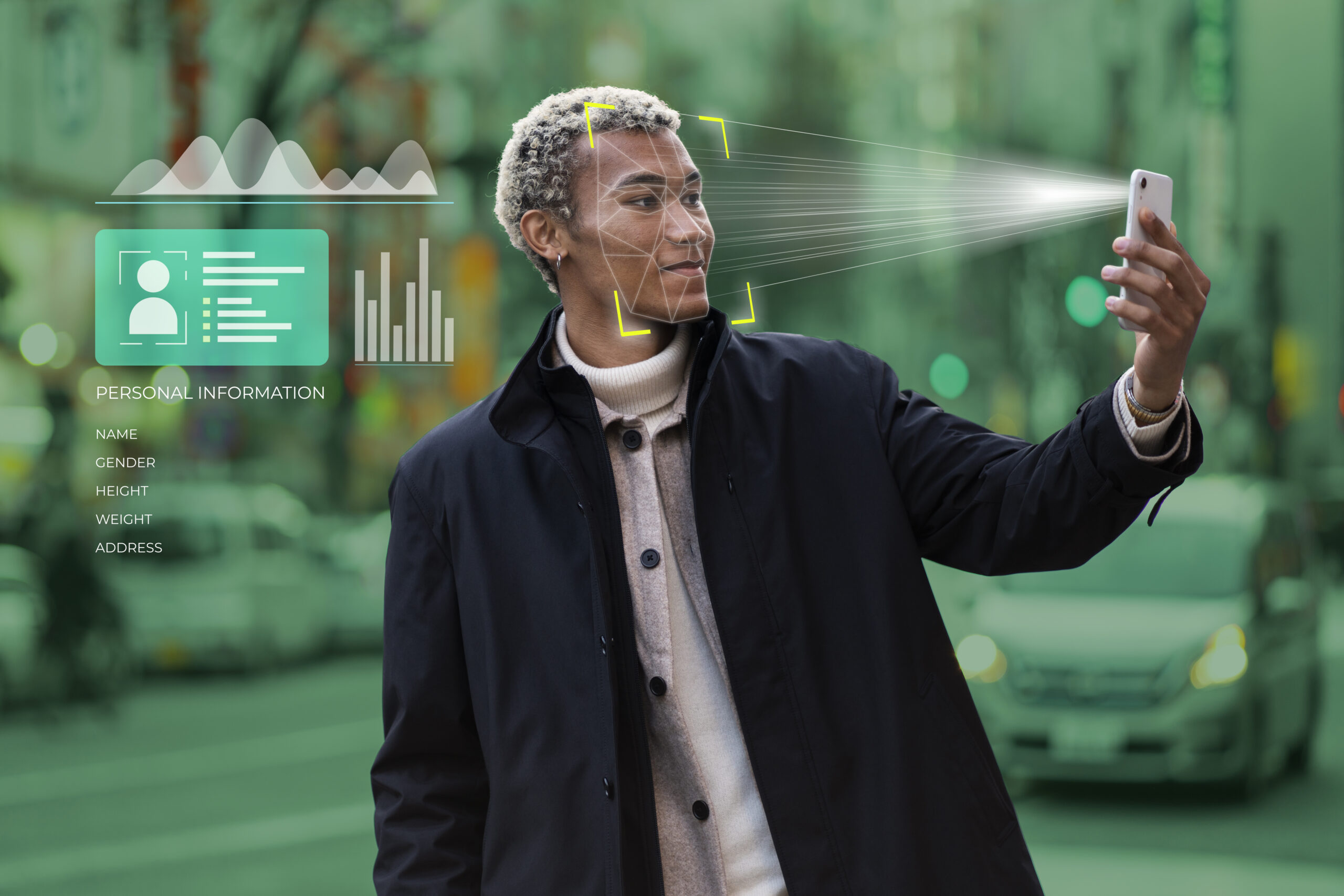AI-driven business transformation is reshaping Africa. Explore trends, success stories, and practical steps for leading AI transformation in your company.
Introduction
Did you know artificial intelligence (AI) could contribute over $15 trillion to the global economy by 2030, yet Africa is poised to capture only a tiny fraction of this boom?
The message is clear: embracing AI transformation isn’t a luxury for African businesses – it’s fast becoming a necessity. Whether you’re a startup founder, a fintech innovator, an individual tech professional, or a small business owner, the rise of AI presents both an opportunity and a challenge. Many organizations still grapple with questions like “How can AI actually benefit my business?” or “Do we have the skills and data to pull this off?”
The good news is that AI-driven business transformation can unlock new levels of efficiency, innovation, and growth. From automated customer support to predictive analytics, even modest AI solutions can make a big impact on productivity and revenue. The challenge lies in knowing where to start and how to lead this change effectively. In this post, we’ll explore the current state of AI in Africa (backed by 2024–2025 trends and stats), real-world success stories from the continent, and a step-by-step guide to implement AI in your organization. By the end, you’ll understand the tangible benefits of AI transformation and have a roadmap to get started – all while positioning your business at the forefront of Africa’s digital future. Are you in?
Why AI-Driven Transformation Is Critical for African Businesses
AI isn’t just a buzzword – it’s a game-changer for businesses in Africa. As global companies leverage AI to streamline operations and personalize customer experiences, African enterprises must keep pace or risk falling behind. In fact, more than three-quarters of organizations worldwide now use AI in at least one business function. This wave is quickly reaching African shores. Here’s why embracing AI-driven transformation is so important for African startups and SMEs:
- Unlocking Efficiency and Productivity:AI can automate repetitive tasks and optimize processes, saving time and reducing errors. For example, AI-powered chatbots handle customer inquiries 24/7 without adding headcount, and smart algorithms can predict inventory needs or maintenance before problems occur. The result is a leaner operation where your team focuses on high-value work rather than drudgery.
- Better Decision-Making with Data:Every business generates data – from sales and customer feedback to social media trends. AI can sift through these vast datasets to reveal patterns and insights that humans might miss. A small retailer can use AI analytics to understand buying trends, while a fintech startup can deploy machine learning for real-time fraud detection. Data-driven decisions lead to higher sales, improved customer satisfaction, and more agile strategy adjustments.
- New Products, Services & Markets:AI isn’t only about internal efficiency; it’s a catalyst for innovation. Companies across Africa are using AI to launch new solutions tailored to local needs. For instance, AI-driven translation services are breaking language barriers, enabling businesses to reach new customer segments in Africa’s diverse linguistic landscape. AI can also help create personalized customer experiences – like a banking app that uses machine learning to offer tailored financial advice to each user. Such innovations differentiate your business in a crowded market.
- Competitive Advantage:Perhaps most importantly, adopting AI gives you a leg up on competitors. As one recent African tech report put it, “AI will not replace people. But people who use AI will replace people who don’t.” Businesses that spurn AI will fall behind those that adopt it to drive growth and efficiency. In other words, the companies that integrate AI as a “co-pilot” for their teams will outpace those that ignore the trend. Embracing AI now positions your firm as a forward-thinking leader in your industry – and helps you meet rising customer expectations for digital services.
Beyond these benefits, AI transformation aligns with Africa’s larger digital evolution. The continent has already leapfrogged in areas like mobile money and telecom, showing an appetite for tech-driven change. AI is the next leap. By weaving AI into your business strategy, you’re not just improving operations – you’re future-proofing your company for the coming decade.
AI Transformation Trends and Opportunities in Africa (2024–2025)
AI adoption is accelerating across Africa, creating exciting opportunities for those ready to lead. Recent studies and market data paint a clear picture: African businesses are increasingly investing in AI, and stakeholders from governments to global tech firms are laying the groundwork for an AI-powered future. Let’s look at some key trends and stats:
- Rapid Market Growth:Africa’s AI market is expanding quickly. In 2025, the continent’s AI industry is valued around $4.5 billion, and it’s projected to soar to $16.5 billion by 2030. This more than threefold growth in just five years signals enormous opportunities for innovators and entrepreneurs. Driving this surge are Africa’s unique advantages – a young, tech-savvy population, mobile-first infrastructure, and an entrepreneurial startup scene. These factors position Africa not as a passive consumer of imported tech, but as an active creator of AI solutions.
- Rising Investment and Startups:Venture capital is flowing into African AI ventures. South Africa attracted $610 million in AI-focused VC funding in 2023, and its total AI investment is expected to reach $3.7 billion by 2030. Nigeria isn’t far behind – it secured $218 million in AI investments in 2023, with a $1.4 billion AI market size projected by 2025. Nigeria now hosts one of Africa’s most dynamic AI ecosystems, second only to South Africa in number of AI startups. Governments are supporting this growth: South Africa aims to develop 300 AI startups and 5,000 AI professionals by 2030 as part of its national strategy. Similarly, Kenya launched a National AI Strategy (2025–2030) to become a regional AI hub, and Morocco’s Digital 2030 strategy targets 240,000 new digital jobs via AI and tech by 2030. For businesses, this momentum means a growing ecosystem of local AI talent, startups, and service providers you can tap into.
- Sector-Specific Breakthroughs:Certain sectors in Africa are taking the lead in AI adoption. Financial services and fintech are at the forefront – not surprising in a continent where mobile banking and digital finance are booming. AI is used for credit scoring, risk analysis, and personalized banking. For example, Kenya’s fintech scene uses platforms like Tala, which leverages AI on mobile data to instantly score credit for the unbanked. Nigerian fintech startups like ai use AI chatbots to deliver micro-loans and financial advice. Telecommunications and media firms are deploying AI for customer service (think AI chatbots for telecom customer support) and to manage networks more efficiently. The healthcare sector is also seeing AI-driven innovation – e.g. in Kenya, Jacaranda Health’s “Uliza Llama” chatbot provides expecting mothers with vital maternal health advice in five local languages using AI. Even agriculture is benefiting, with emerging AI solutions for crop monitoring and yield prediction, crucial for a continent where agri-business is vital. These trends show that AI isn’t confined to one industry – any business vertical can find a valuable AI use-case.
- Generative AI and New Tech Trends:The global explosion of generative AI (like GPT-4, DALL-E, and other content-creating AI) has reached Africa as well. In 2023–2024, tools like ChatGPT gained widespread popularity among African professionals and developers. Many African companies have started experimenting with gen AI for content creation, coding assistance, and customer interaction. A McKinsey survey in late 2024 found that over 40% of African organizations had at least begun experimenting with AI or implemented significant solutions, including generative AI. This is a remarkable uptick in a short time. The implications? We’re likely to see home-grown African generative AI applications addressing local languages and cultures (indeed, African AI researchers are building models for languages like Swahili, Yoruba, and Amharic. For businesses, staying aware of these cutting-edge tools means you can leverage them early – be it using AI to draft marketing content, design prototypes, or interact with customers in more human-like ways.
- Supportive Ecosystem and Policies:Another positive trend is the strengthening support ecosystem for AI. Governments in Africa are increasingly aware of AI’s potential and are formulating policies to encourage responsible AI use. As noted, Kenya and Morocco have national AI strategies; the African Union itself has outlined a Continental AI Strategy to guide member states on AI for development. International tech companies (Google, Microsoft, IBM, etc.) have launched AI research labs, accelerator programs, and cloud infrastructure on the continent, lowering barriers for local firms to access advanced tools. Moreover, collaborations between fintechs, governments, and global partners are being encouraged to unlock AI’s full impact. All this means if you decide to embark on AI transformation, you won’t be doing it alone – there are growing resources, communities, and frameworks to support your journey.
In summary, the period of 2024–2025 marks a tipping point for AI in Africa. The market is heating up, success stories are emerging, and the necessary ingredients (investment, talent, policy) are falling into place. For a business leader or founder, now is the time to assess how these trends affect your strategy. There is a clear first-mover advantage for those who integrate AI early: you gain experience, data, and market share while others are still hesitating. And as we’ll see next, many African companies are already reaping rewards from AI – providing inspiration and lessons you can apply in your own organization.
Success Stories: How African Companies Are Leveraging AI
One of the best ways to understand AI’s potential is by seeing it in action. Across Africa, forward-thinking companies – from nimble startups to larger enterprises – have begun deploying AI solutions to solve local problems and drive business results. Here are a few inspiring real-world examples of AI-driven transformation in Africa:
- Fintech & Financial Inclusion:Millions of Africans remain outside the formal banking system, but AI is helping bridge that gap. In Kenya, startup Tala uses machine learning algorithms on mobile phone data to instantly assess creditworthiness for users with no credit history. This AI-driven approach has enabled Tala to provide small loans to underserved customers, expanding financial inclusion. In Nigeria, ai has developed an AI-powered chatbot that interacts with users via messaging to provide microfinance services. Users can ask the chatbot for loans or financial tips, and the AI evaluates and responds in real-time – automating what used to be a lengthy, face-to-face process. These fintech innovations show how AI can create new products tailored to African markets (like micro-loans via chat) while operating at low cost and scale. For the companies involved, AI has been key to scaling up rapidly and handling millions of transactions or inquiries that would overwhelm human staff.
- Healthcare & Social Impact:AI is literally saving lives in Africa by augmenting the continent’s stretched healthcare resources. A standout example is Jacaranda Health in Kenya, which built an AI chatbot named Uliza (powered by OpenAI’s GPT model, locally dubbed “Uliza Llama”). Uliza converses with expectant mothers in their native languages – providing maternal health advice, answering questions about pregnancy, and sending reminders for check-ups. This service has dramatically extended the reach of healthcare education into communities that doctors and nurses can’t regularly visit. In Nigeria and Ghana, AI tools are being used to diagnose diseases from medical images (like detecting tuberculosis from chest X-rays) and to predict disease outbreaks using epidemiological data. These AI applications in healthcare not only improve patient outcomes but also illustrate AI’s flexibility – the same chatbot technology used for customer service can be retrained to deliver health information, for example.
- Education & Talent Development:African ed-tech companies are also harnessing AI to personalize learning and expand access. In Nigeria, Rising Academies (an education provider) uses AI to personalize learning plans for students, adjusting the content and pace based on each learner’s performance. This helps students who might be struggling in traditional classrooms to get tailored support, boosting their success rates. On another front, AI platforms are being used to teach digital skills at scale. For instance, various coding bootcamps and online education startups employ AI tutors or recommendation engines to guide learners through courses in data science and programming – effectively grooming the next generation of African AI talent. These initiatives show a virtuous cycle: AI is used to train people, who in turn will build new AI solutions for Africa.
- Retail & Customer Service:Businesses in retail and telecom are using AI to enhance customer experience. In South Africa, major telecom companies have rolled out AI-driven customer service assistants (chatbots) on WhatsApp and web platforms that handle queries about data bundles, account balances, and technical support. One South African mobile carrier has a chatbot that serves as a 24/7 digital assistant, helping customers troubleshoot issues or discover new services, all through natural language conversations. This not only improves response time and customer satisfaction but also cuts support costs. Likewise, retailers and e-commerce firms in Africa are starting to use AI for product recommendations (much like Amazon’s algorithms) and to optimize delivery routes in crowded cities. The impact on revenue and loyalty can be significant when customers feel understood and served promptly by AI-driven systems.
- Agriculture & Logistics:Agriculture is the backbone of many African economies, and AI is beginning to make inroads here too. For example, in East Africa, agritech startups are employing AI-powered image recognition to help farmers identify crop diseases or pests early via a smartphone app – potentially saving a harvest by prompting timely intervention. Drones combined with AI are being used for crop monitoring over large farm areas, helping to maximize yields by analyzing where to irrigate or apply fertilizer. In one case, a tech company in Nigeria is piloting an AI model that analyzes satellite imagery and weather patterns to predict crop outputs, which helps farmers and governments plan better for food supply. On the logistics side, AI algorithms are optimizing delivery routes and supply chain operations for companies distributing goods in remote areas, reducing fuel costs and delays.
Each of these success stories carries a lesson: AI adds value when applied to concrete local challenges. The companies didn’t adopt AI for AI’s sake; they started with a problem (e.g. many customers need small loans quickly, mothers need health info, students need personalized tutoring, etc.) and then implemented an AI solution to address it. The results have often been transformative – reaching more people, cutting costs, improving accuracy, and sometimes even creating entirely new business models.
As you consider AI for your own organization, think about the pain points or growth opportunities in your context. Chances are, there’s an AI tool or approach that can help. And remember, you don’t have to reinvent the wheel: partnering or learning from these pioneers can accelerate your journey. In fact, engaging with experts or digital transformation partners (like DhDigitalTech’s innovation team) can expose you to proven frameworks and case studies relevant to your industry. Leveraging local success stories and expertise will increase your odds of a smooth and rewarding AI transformation.
Overcoming Challenges on the AI Transformation Journey
While the potential of AI is immense, let’s be realistic: adopting AI in any business comes with challenges, especially in emerging markets. It’s common for business owners to worry about costs, complexity, or the readiness of their team. Here we outline the key challenges African businesses face in AI transformation – and how you can overcome them:
- Skill Gaps and Talent:Implementing AI requires certain skills (data science, machine learning engineering, etc.) that are in short supply. In a recent study, 30% of companies worldwide cited lack of specialized AI skills as a top challenge. African firms often feel the pinch of a tech talent gap, as experienced AI professionals may be scooped up by big global companies or move abroad. Solution: Don’t let this stop you. You can start by upskilling your existing team – many online courses and bootcamps (some free or affordable) can train your staff in AI basics. Encourage interested employees to take on “AI champion” roles after training. Also, consider partnering with external experts or firms.
For instance, DhDigitalTech offers consulting services where our data scientists collaborate with your team, so you get the expertise on tap without having to hire full-time initially. Finally, focus on building an AI-ready culture: ensure your leadership is educated about AI possibilities, so they can drive the initiative and attract talent (top AI professionals are drawn to companies with serious AI ambitions).
- Data Readiness:AI thrives on data – the fuel that powers machine learning models. Many African businesses struggle here: data might be scattered across paper and digital systems, or of poor quality (inaccurate, outdated, biased). As the saying goes, “garbage in, garbage out” – bad data will lead to bad AI outcomes. Solution: Before diving into complex AI projects, get your data house in order. Conduct a data audit to identify what data you have and its condition. Implement basic data governance: decide how you’ll collect, clean, and manage data consistently. This might mean investing in cloud storage or simple database systems to consolidate information from different departments. You don’t need big expensive infrastructure – many African firms are using cloud-based tools (Azure, AWS, Google Cloud) to store and process data without heavy upfront costs. If you lack historical data, start collecting it now (e.g. track customer inquiries, sales patterns, etc.), so you build a foundation for future AI projects. Remember, quality over quantity: having a smaller, well-organized dataset is better than a huge mess of unreliable data.
- Cost and Scale Concerns:Smaller businesses often fear that AI is too expensive or only for large corporations. This is a myth – “Only large firms can afford AI” is no longer true. Today, many AI tools are open-source or low-cost, and cloud AI services charge only for what you use, making them accessible to startups and SMEs. Solution: Start with low-cost, high-impact use cases. For example, instead of building a custom AI from scratch, you might use an existing AI service: deploy a pre-built chatbot from a cloud provider, or use an AutoML tool that requires minimal coding. These solutions can cost just a few dollars a month. Always measure the ROI – often the efficiency gains or extra sales from an AI pilot will far outweigh its cost. In fact, research shows companies are seeing strong returns on their AI spend; for instance, enterprises globally are averaging $3.7 in ROI for every $1 invested in AI (and top performers see over 10x returns).
The takeaway? Treat AI as an investment in productivity and innovation, not just an expense. You can start small and scale your spending as you prove value.
- Infrastructure and Connectivity:Reliable internet and power, as well as hardware for AI (servers or cloud access), can be challenges in some regions. If your operations are in areas with limited connectivity, how do you run cloud-based AI tools? Solution: This is where creativity and planning come in. Cloud computing has been a boon – you don’t need a data center on-site if you can access Azure or AWS servers located in say, South Africa or Europe. For intermittent connectivity, you can schedule AI tasks for off-peak times or use solutions that work offline (some AI models can run on a laptop or even a smartphone). Governments and telcos are steadily improving Africa’s digital infrastructure as part of broader digital transformation agendas so the trend is in your favor. In the meantime, focus on scalable solutions – ones that can work under current constraints but scale up as infrastructure improves.
- Regulatory and Ethical Considerations:Lastly, navigating the regulatory landscape is crucial. AI often involves handling personal data or making decisions that could be sensitive (like credit approvals). Many African countries are still developing their AI and data protection regulations. Over 55% of African business leaders cite regulatory uncertainty as a barrier to AI adoption. Solution: Stay informed on local data privacy laws (such as Nigeria’s NDPR or South Africa’s POPIA) and ensure your AI plans comply with them. Implement AI responsibly by including human oversight – for example, if an AI model flags a transaction as fraud, have a human review before action, at least in the early stages. Document your AI decision processes (for transparency) and be prepared to explain them to stakeholders or regulators. Adopting ethical AI practices not only avoids legal issues but also builds trust with customers and employees. If this sounds complex, don’t hesitate to consult with legal experts or industry associations that are forming AI guidelines in Africa. When you approach AI with a mindset of responsibility and inclusivity (as emphasized in Mastercard’s recent Africa AI whitepape, you’ll position your business as a trustworthy innovator).
Pro tip: Many of these challenges are easier to tackle with the right partners. Consider collaborating with local tech hubs, universities, or consulting firms like DhDigitalTech, which specializes in digital transformation. We’ve helped clients establish solid data governance, trained their staff in AI basics, and even guided them through compliance issues – essentially jump-starting their AI journey while avoiding common pitfalls. The path to AI transformation is a marathon, not a sprint, but with careful planning and the right support, African businesses of any size can navigate the obstacles and succeed.
Now that we’ve addressed the challenges, let’s get into the how-to. In the next section, we provide a practical roadmap to implementing AI in your business – from first steps to scaling up – along with some tools and tips to ensure you get real results.
Practical Implementation: How to Start Your AI Transformation (Step-by-Step)
You understand the why and what of AI transformation – now let’s dive into the how. Implementing AI in your business may seem daunting, but it can be broken down into manageable steps. Below is a step-by-step guide to kickstart your AI-driven transformation, along with actionable tips, recommended tools, and common mistakes to avoid at each stage.
Step 1: Identify High-Impact Use Cases
Start by pinpointing where AI can make a real difference in your organization. Look for pain points or repetitive processes that, if improved, would save time or money, or create new value for customers. For example, do you spend hours every week on manual data entry or responding to the same customer inquiries? That’s a candidate for automation with AI. Or perhaps your sales forecasting is often off – AI predictive analytics could help. Brainstorm 2–3 use cases by talking to department heads and frontline employees about their challenges. Focus on use cases that are simple and high-impact to tackle first. For instance, an e-commerce SME might choose AI chatbots for customer service, or an accounting firm might use AI to automatically categorize invoices. By starting small, you ensure quick wins that build confidence.
Tool & Resource Tips: You don’t have to invent the solution from scratch. Many off-the-shelf AI tools exist for common tasks. Platforms like Zapier or Microsoft Power Automate let you add AI (for example, reading emails and taking actions) without coding. AI-as-a-service offerings from cloud providers can do things like sentiment analysis on feedback or OCR on scanned documents with a simple API call. Research what’s available in your problem area – chances are, someone has built an AI tool you can leverage with minimal setup.
Common Mistake to Avoid: Overreaching too early. Don’t attempt a moonshot like building a complex AI from day one. For example, trying to implement an advanced AI system across all departments simultaneously is a recipe for confusion. It’s better to nail one use case at a time. Avoid the trap of “we need a big budget and a big project.” Instead, prove value on a small scale; the rest will follow.
Step 2: Get Your Data Ready
As highlighted earlier, data is the foundation of AI. Once you’ve chosen a use case, ask: What data is needed to power this AI solution? For example, if you want an AI to predict sales, you’ll need historical sales data, marketing data, perhaps economic indicators. Gather the relevant data and assess its quality. This may involve pulling data from different sources (spreadsheets, databases, even paper records). Clean and organize the data – remove duplicates, fix errors, ensure consistency in formats. If you find gaps (say you never tracked a certain metric), decide how to start collecting that data going forward. Implement basic data pipelines: even a scheduled task to export and back up your database weekly is a good start.
Tool & Resource Tips: Use spreadsheet tools or basic databases to compile data initially. For cleaning, tools like OpenRefine or Python’s pandas library (if you have some coding skill) are great for data cleaning tasks. If your data is small, Excel/Google Sheets may suffice; for larger sets, consider a cloud database (Google BigQuery, AWS Aurora, etc.) which often have free tiers. Also, explore public datasets – for example, if you need demographic data to augment your customer info, organizations like the World Bank and government open data portals have a wealth of information you can incorporate.
Common Mistake to Avoid: Skipping the data prep. It’s tempting to jump straight into testing an AI tool on whatever data you have. But feeding an algorithm messy or biased data will lead to poor results and frustration. Don’t rush this step. Also, be mindful of data privacy – ensure you have consent to use customer data, and anonymize or secure sensitive information as needed.
Step 3: Pilot a Solution
Now for the exciting part – building or configuring your first AI pilot. Depending on your use case, this could mean training a simple machine learning model or setting up an AI software tool. For example, if your use case is automating customer support, you might set up a chatbot using a service like Dialogflow or Microsoft Bot Framework and train it with a list of common Q&As from your business. If it’s forecasting, you could use a tool like Google AutoML Tables: just upload your cleaned data and let it train a model for you. The goal of a pilot is to develop a working prototype of the AI solution in a limited scope. Test it on historical data or in a small environment. Monitor its performance – how accurate are the forecasts? Do customers find the chatbot helpful? Collect feedback from users interacting with the pilot.
Tool & Resource Tips: For those new to AI, leveraging no-code or low-code AI platforms is a smart move. Apart from the ones mentioned, others include DataRobot (for automated ML) or even Azure Cognitive Services which offer pre-trained AI functionalities (like language translation, image recognition) that you can plug into your applications. If you’re more hands-on and have a developer, Python libraries like scikit-learn or TensorFlow can be used to create custom models on a small scale. Remember to document what you do in this pilot – it will be valuable knowledge for scaling later.
Common Mistake to Avoid: Expecting perfection out of the gate. Your first AI model might only be, say, 70% accurate in its predictions, or your chatbot might answer 8 out of 10 questions correctly. That’s okay! AI projects are iterative – you improve them over time. Set realistic expectations with your team that the pilot is about learning, not delivering full business value yet. Also avoid rolling out a pilot company-wide prematurely; test in a controlled setting (like with one product line or a subset of customers) to limit any negative impact while you refine the system.
Step 4: Measure Results and Iterate
An AI project doesn’t end when the tool is up and running – in fact, that’s just the beginning. Now you need to measure how it’s performing against your goals. Define Key Performance Indicators (KPIs) early on. For example: “Reduce customer support response time by 50%,” or “Improve sales forecast accuracy by 20%,” or “Save 10 hours per week on manual data entry.” After running your pilot for a few weeks or months, check the data: Are you seeing the promised time savings? Has customer satisfaction improved based on surveys? Calculate the return on investment (ROI) if possible – e.g. if your AI saved 10 hours of work a week, that’s X dollars of salary time freed up. Many early AI adopters see significant ROI; remember the study above where 43% of companies said AI-driven productivity gave the greatest ROIblogs.microsoft.com. Use those metrics to make the case to your stakeholders (or yourself) that the project is worth continuing.
Based on what you measure, iterate on the solution. Perhaps you discover the chatbot struggles with complex questions – you might retrain it with more data or program it to hand off those queries to a human. Or your predictive model might be consistently off in one scenario – you can tweak the model or add more data for that scenario. Iteration is normal and healthy in AI projects. It’s how you move from a decent pilot to a highly effective tool.
Tool & Resource Tips: Make sure you have analytics in place. For a chatbot, use its built-in analytics dashboard to see usage and success rates. For internal process improvements, simply tracking time or error rates in a spreadsheet before vs. after gives insight. There are specialized AI monitoring tools (like WhyLabs or EvidentlyAI) that can track AI model performance over time and alert you to drifts or issues – these are more relevant as you mature, but be aware of them. Also, engage with your end-users or employees using the AI. Their qualitative feedback (“this recommendation isn’t relevant” or “the new system saves me a ton of time!”) is invaluable for guiding improvements.
Common Mistake to Avoid: Neglecting user buy-in and training. Even the best AI solution can flop if the people meant to use it don’t trust it or know how to use it. Involve your team early – explain what the AI does and does not do. Provide a little training or documentation. Make it clear that the AI is there to assist, not replace jobs – this alleviates fear and resistance. Also, avoid the “set it and forget it” mentality. AI models can degrade over time as data changes, so plan to revisit and update them periodically (another reason to have internal or external experts on call).
Step 5: Scale Up What Works
Once your pilot has proven its value – congratulations, you’ve achieved a milestone! Now it’s time to scale. Scaling can mean a few things: rolling the solution out to more users, integrating it into your core processes, or even taking on new AI projects. For scaling the initial solution, ensure you have the infrastructure to support it. If 1000 customers will now chat with your AI instead of 100 during the pilot, do you need a better subscription plan or a more robust cloud setup? Work with IT to productionize the solution (for example, deploy the model on a reliable cloud service, set up data pipelines for continuous feeding of new data, etc.). Integrate the AI into daily workflows – embed the AI-driven forecasts into your regular sales meetings, or include the chatbot metrics in your customer service reports.
As you gain confidence, explore other use cases to automate or augment different parts of your business. Perhaps your success in finance forecasting encourages you to try an AI-driven marketing campaign optimizer next. Each new project should go through similar pilot-iterate-scale cycles. Over time, you’ll build an AI-enabled organization where multiple processes are enhanced by artificial intelligence. This is the essence of AI transformation – not one tool, but an overall uplift in how your business operates and makes decisions.
Tool & Resource Tips: For scaling, consider more robust tools. If you used a basic no-code tool in pilot, you might move to a full-fledged cloud AI pipeline using AWS SageMaker or Azure ML for better scalability, security, and integration with your databases. Document your processes so far – perhaps create an internal “AI playbook” that captures what you’ve learned, vendor contacts, and best practices. This will help as you on-board new team members or tackle bigger projects. Keep an eye on new AI tools coming out – the field is evolving rapidly, and what was cutting-edge can quickly become standard. Subscribing to industry newsletters or communities (like local AI meetups, or African tech forums) can keep you informed.
Common Mistake to Avoid: Scaling without proper support. As AI becomes more critical to your operations, you need to ensure continuity. Don’t rely on one enthusiastic employee to manage everything – institutionalize the knowledge. Train a backup person, or secure a support contract with the software provider, or have a consulting partner like DhDigitalTech on retainer for periodic check-ups. Also, avoid complacency after one success. Continual improvement is key; always be asking “what else can we improve with AI?” but balance it with the change management so you’re not overloading the organization with too much change at once.
Tools and Resources to Accelerate Your AI Journey
- Cloud AI Platforms:These provide ready-made infrastructure and services for AI. Examples include Google Cloud AI Platform, Microsoft Azure AI, and Amazon SageMaker. They offer everything from pre-trained AI models (for vision, speech, etc.) to tools to build and deploy your own models. Many have free tiers – a great way to experiment without big costs.
- Open-Source Libraries:If you have developers or data scientists, open-source tools like TensorFlow, PyTorch, scikit-learn, and Keras are industry-standard for building AI models. There’s a rich community online with tutorials tailored for beginners up to experts – plus no licensing costs.
- AutoML and No-Code AI:For those without deep AI expertise, consider AutoML services (e.g. Google AutoML, ai) which automate much of the model-building, or no-code platforms like Dataiku and MonkeyLearn that let you create AI models via a visual interface. These are perfect for small businesses to get decent results quickly.
- Local AI Communities and Hubs:Tap into Africa’s growing AI community. Organizations like Data Science Nigeria, Deep Learning Indaba, or innovation hubs in Nairobi, Lagos, Cape Town, etc., often host workshops or have mentorship programs for businesses wanting to adopt AI. Online forums (and LinkedIn groups) focusing on “AI in Africa” can also be places to ask questions and learn from peers.
- Consultants and Training Providers:If budget allows, bringing in an expert can dramatically shorten your learning curve. Many firms (including DhDigitalTech) offer strategy consulting to help identify use cases, technical consulting to implement solutions, or training programs to raise your team’s AI proficiency. This kind of support can be especially useful for navigating complex areas like data engineering or advanced analytics that you might not have in-house.
Expected Timelines and Outcomes
You might be wondering, how long does all this take and what results will I see? While every case differs, here’s a rough idea: a focused AI pilot on a well-defined task can often be executed in 2–3 months (this includes time to gather data, configure a tool or model, and test). Initial results could include things like 20–30% time savings on the automated task, or a first-generation model that’s say 60–80% accurate. With another few months of iteration, it’s realistic to reach higher accuracy or greater efficiency gains (e.g. cutting that manual work by half or more). Within 6–12 months, many companies see tangible ROI from their first AI implementations – either in cost savings, extra revenue, or improved customer retention. In fact, a survey found 28% of AI leaders were able to implement AI solutions in under 3 months, giving them a rapid competitive edge.
Keep in mind, AI transformation is an ongoing journey. The outcomes you should expect are not just one-off improvements, but compounding benefits: as you automate one area, you free up resources to focus on the next opportunity. Over a few years, a company diligently applying AI in various functions could see a significant uptick in productivity (often 20–40% improvements), better profit margins, and the ability to scale operations without commensurate increase in headcount. Just as importantly, you’ll build a reputation as an innovative, data-driven organization – attractive to customers, investors, and top talent alike. Those qualitative benefits, like stronger customer trust or a more innovative company culture, are harder to measure but extremely valuable for long-term success.
By following these steps and leveraging the tools at your disposal, you set the stage for a successful AI transformation. It’s not without effort – but as countless businesses are finding, the effort pays off in efficiency, growth, and staying power in a fast-changing market.
Conclusion
Africa stands at the cusp of an AI-driven business revolution. The key takeaways are clear: AI is no longer a futuristic concept but a present-day tool that African businesses – big and small – can harness for transformation. By leading with a strategic approach, focusing on high-impact use cases, and nurturing the necessary skills and data, companies can reap substantial benefits: greater efficiency, smarter decisions, innovative services, and a competitive edge in their market. Crucially, this journey is as much about people and mindset as it is about technology. Successful AI-driven transformation comes from a blend of human talent, quality data, and the right technology working in harmony.
As you consider the next steps, remember the main benefits awaiting you. Embracing AI now can streamline your operations, uncover new revenue streams, and enhance customer experiences – positioning your business as a forward-thinking leader in the African market. The examples and trends we explored show that many are already on this path, and the results are compelling. The question for you is whether to seize this momentum or risk playing catch-up later.
At DhDigitalTech, we’re passionate about guiding businesses through such digital transformations. From initial AI strategy planning to hands-on implementation, our team is here to support you every step of the way. (In fact, we’ve helped startups and SMEs implement AI solutions that delivered quick wins and long-term growth – all through a collaborative, tailored approach.) If you’re curious about how AI could specifically benefit your organization, feel free to reach out for a friendly consultation or check out our resources on digital transformation. That’s our soft call-to-action: let’s explore the possibilities together and ensure your company thrives in this new era.
The future of business in Africa is being written today with AI and innovation at its core. The only question is: Will your business be part of this AI-powered future, or will you watch from the sidelines? The opportunity to lead is yours – and there’s no better time than now to get in the game.






